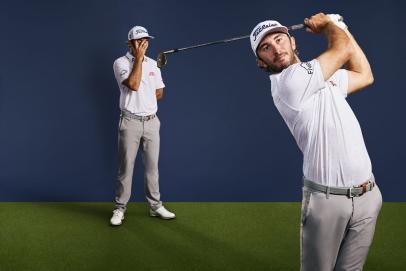GD Schools
Learn how to stop hooking it with MLB legend John Smoltz

Dom Furore
John Smoltz retired from Major League Baseball in 2009, but the 55-year-old Hall of Fame pitcher still looks like he could suit up and get batters out. These days, however, Smoltz dominates on an entirely different playing field. Despite chronic hip and back issues from his 22 years in the bigs, he carries a plus-1.6 Index. We paired the Fox MLB lead analyst with Golf Digest 50 Best Teacher Brian Manzella for a lesson at Smoltz’s Atlanta-area home club, Hawks Ridge.
“Watching him hit a few balls, it was clear John has tremendous control over the clubface,” says Manzella, who teaches at The Studio in the Sky in New Orleans. “But his swing path was too much to the right—and he was clearly afraid that using his famous right hand too much would produce hooks.”

The goal? Show Smoltz how to release the club without fear of losing it left, and reduce the amount the club travels in to out through impact—two keys that would help almost any player. “I can go after it now instead of swinging defensively,” Smoltz says. “I can take this to the course right away.”
FACE YOUR PALM

Dom Furore
“A lot of players think the trail wrist should stay bent to ‘hold the angle,’ or they think using the wrists is somehow ‘flipping’ through impact,” Manzella says. “If you have a relatively neutral swing path and are turning your chest through impact, you can really use that trail hand to help produce speed.”
The feel? Take a handful of balls in your trail hand and make an imaginary swing, stopping when your trail arm is chest high on the follow-through. At this position, you should be able to look down and see your palm and the balls facing you (left). “John was actually trying not to bend his right hand at all,” Manzella says. “Now, he can throw fastballs instead of changeups.”
GROOVE YOUR PATH

“Swing path is an important one, because when it gets extreme, it limits the kind of shots you can hit,” Manzella says. “John’s path was 6 degrees to the right, which made it hard for him to hit the relatively straight shots he likes to see.”
To train a more neutral path, Manzella pegged a tee at driver height 12 inches ahead and slightly inside of Smoltz’s 7-iron ball position (above). When Smoltz hit the ball and clipped the tee, it meant his path was neutral. “If your path is too far left, which it tends to be for slicers, flip the drill and put the tee slightly outside the target line,” Manzella says. “Perfect strikes.”




